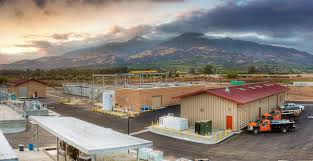Use in water treatment
 There are several methods for investigating the level of hygiene in a sample of food, drinking water, equipment etc. Water samples can be filtrated through an extremely fine filter. This filter is then placed in a nutrient medium. Microorganisms on the filter then grow to form a visible colony. Harmful microorganisms can be detected in food by placing a sample in a nutrient broth designed to enrich the organisms in question. Various methods, such as selective media or PCR, can then be used for detection. The hygiene of hard surfaces, such as cooking pots, can be tested by touching them with a solid piece of nutrient medium and then allowing the microorganisms to grow on it.
There are several methods for investigating the level of hygiene in a sample of food, drinking water, equipment etc. Water samples can be filtrated through an extremely fine filter. This filter is then placed in a nutrient medium. Microorganisms on the filter then grow to form a visible colony. Harmful microorganisms can be detected in food by placing a sample in a nutrient broth designed to enrich the organisms in question. Various methods, such as selective media or PCR, can then be used for detection. The hygiene of hard surfaces, such as cooking pots, can be tested by touching them with a solid piece of nutrient medium and then allowing the microorganisms to grow on it. There are no conditions where all microorganisms would grow, and therefore often several different methods are needed. For example, a food sample might be analyzed on three different nutrient mediums designed to indicate the presence of "total" bacteria (conditions where many, but not all, bacteria grow), molds (conditions where the growth of bacteria is prevented by e.g. antibiotics) andcoliform bacteria (these indicate a sewage contamination).
There are no conditions where all microorganisms would grow, and therefore often several different methods are needed. For example, a food sample might be analyzed on three different nutrient mediums designed to indicate the presence of "total" bacteria (conditions where many, but not all, bacteria grow), molds (conditions where the growth of bacteria is prevented by e.g. antibiotics) andcoliform bacteria (these indicate a sewage contamination).
No comments:
Post a Comment